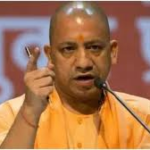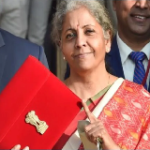AUTHOR : RAJOLI SIDDHARTH JAYAPRAKASH
After nearly half a decade, Prime Minister Narendra Modi visited Russia. A lot has changed since PM Modi last visited Russia in 2019. India’s trade with Russia hovered over the US$ 10 billion mark, and Russia’s trade with Europe was at an all-time high despite sanctions. All this would change on 22 February 2022, with Russia’s invasion of Ukraine. A relationship prophesied to be dormant, veering towards mere symbolism, suddenly attained an economic impetus. In 2023, bilateral trade between India and Russia skyrocketed to US$ 65 billion, fuelled mainly by Russian energy imports. PM Modi’s recent visit to Russia was a routine bilateral visit not only to streamline issues that have emerged over the years, but also to chart the course for India-Russia cooperation in the years to come.
Outcomes of this visit
During the visit, PM Modi was conferred with the order of Saint Andrew the Apostle, the highest civilian honour in Russia, manifesting the importance of India in Russia’s calculus. During the two-day visit, discussions were held on pressing issues such as the war in Ukraine, the repatriation of Indians in the Russian armed forces who were duped into fighting in the frontline, and other issues such as the crisis in Gaza. Along with these discussions, 15 agreements were signed between India and Russia, including MoUs between the Trade Promotion Council of India and All Russia Public Organisation “Business Russia” to promote bilateral trade and investment, and an agreement between Invest India and JSC “Management Company of Russian Direct Investment Fund”. Both nations have set the target of US$ 100 billion in bilateral trade by 2030.
An MoU was signed between the Ministry of Environment, Forests and Climate Change and the Ministry of Economic Development of the Russian Federation to address climate change issues and work together on developing low-carbon technologies. Further, an MOU was concluded between the Survey of India and the Federal Service for State Registration, Cadastre and Cartography, Russian Federation; and Indian Pharmacopoeia Commission and Russia’s Federal State Budgetary Institution “Scientific Centre for Expert Evaluation of Medicinal Products”.
More importantly, India’s interest in cooperating in the Russian Far East has increased since 2019, with both countries agreeing to cooperate in trading and investing in the Russian Far East from 2024 to 2029, specifically in the sectors of agriculture, energy, mining, manpower, diamonds, pharmaceuticals, and maritime transport. In Arctic exploration, MoUs were signed between India’s National Centre for Polar Research and the Antarctic Research Institution on Cooperation in Research and Logistics in the polar region. Last month, Russia approved the draft logistics agreement, simplifying military-to-military exchanges, training, port calls and humanitarian Assistance and Disaster relief operations (HADR). This agreement will enable India to use Russia’s Arctic facilities.
During the visit, significant emphasis was laid on cooperation in the field of counter-terrorism and regional security, with both leaders discussing the situation in Afghanistan and issues related to radicalism, drug trafficking, and terrorism and emphasised the importance of the role of the Moscow format meetings for a long-term solution in Afghanistan.
What does this visit mean for India-Russia relations?
Several strategic commentators have undermined the outcome of this visit by dismissing it as one driven by mere symbolism. However, the outcomes of the visit are quite significant; it indicates an enhanced economic partnership between the two nations in the years to come. On paper, if traffic on the INSTC were to increase—with a free-trade agreement concluded with the EAEU and not to mention the Northern Sea Route complementing the revival of the Soviet era Chennai-Vladivostok maritime corridor—it will reduce the transit time from 40 days to 20 days, which can result in India taking a more pro-active role in Eurasian trade.
Establishing two new consulates in Ekaterinburg and Kazan further indicates India’s increasing interest in Russia. It also reflects the increasing presence of an Indian diaspora across Russia; the Indian business presence, although minimal in Russia, has made considerable progress over the years. Even though the energy trade dominates the trade basket, the Indian pharmaceutical sector in Russia has emerged as a top medicine supplier in Russia, replacing Germany. Several Indian pharma giants such as Dr Reddy’s laboratories, Sun Pharma, and Cipla have partnered with local Russian firms and begun producing generic medicines.
Since 2022, the payment settlement has remained a problem and further remained with the Rupee-Ruble falling in 2023. However, a mechanism has emerged wherein the payment dispute has been settled. According to VTB bank CEO Andrey Kostin, the problem of the frozen rupee in Russian coffers has been resolved, “the rupees have been turned into rubles through intermediaries in India and UAE.” Furthermore, banks in Russia have invested the rupees in Indian shares, government securities and infrastructure projects and the transaction cost involved in converting rupees to ruble have come down, which has made trade a bit more seamless.
Lastly, Putin accepting the request to discharge and repatriate the Indians serving in the Russian armed forces, estimated to be about 35-50 people, is a significant diplomatic victory for New Delhi, as Nepal and Sri Lanka were unable to secure the repatriation of their citizens serving in the Russian army despite multiple appeals.
Challenges
Historically, the military-technical partnership has been the bedrock of India-Russia relations. In recent years, no major military deal has been concluded between the two nations since the S-400 anti-missile defence system. The war in Ukraine has also raised concerns about the timely supply of weapons exports to New Delhi; Moscow’s bonhomie with China is another factor that exacerbates such concerns, as the latter could get a preference for receiving Russian arms over India. Secondly, despite New Delhi’s outreach to the Russian Far East and the revival of the Chennai-Vladivostok maritime corridor, the gains from trade are overestimated, as the Far East lacks capacity in terms of labour and foreign markets, as Japan and South Korea have imposed sanctions on Russia. Thus, the potential Indian industries in the Russian Far East would realistically only be able to trade domestically (Russia) or with ASEAN or India. Similar challenges persist with the INSTC, as it would involve Indian firms doing business with a sanctioned Iran, and the frequent loading and unloading of cargo may prove to be a hurdle. Lastly, the burgeoning trade deficit is another concern, as Indian exports to Russia in 2023 were only at US$ 4 billion. In contrast, the exports stood at a whopping US$ 61 billion, with the balance of payments favouring Russia. In the future, bridging the trade deficit will be critical.
Conclusion
PM Modi’s visit to Russia raised eyebrows in several Western capitals, with Ukrainian President Volodymyr Zelensky calling the visit “a huge disappointment and a devasting blow to peace efforts” as on the same day when Modi was in Russia, a barrage of Russian missiles hit a children’s hospital in Kyiv killing 42 people. While the United States voiced their concerns over India’s relations with Russia, the Biden administration reaffirmed India’s importance in Washington’s strategic calculus. Further, this visit reflects India’s underlying multipolar vision in its outreach to the rest of the world, as the prime minister visited Russia first upon re-election. This visit further clarifies the misperceptions of a decline in India-Russia relations in light of Modi not visiting Russia in 2022 or 2023 and shows that the cooperation between the two countries is stable and is not influenced by the geopolitical configuration of the World order.


